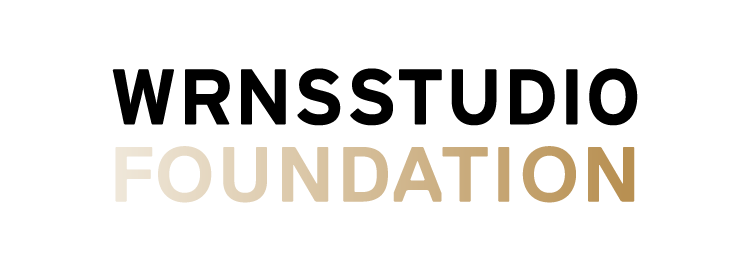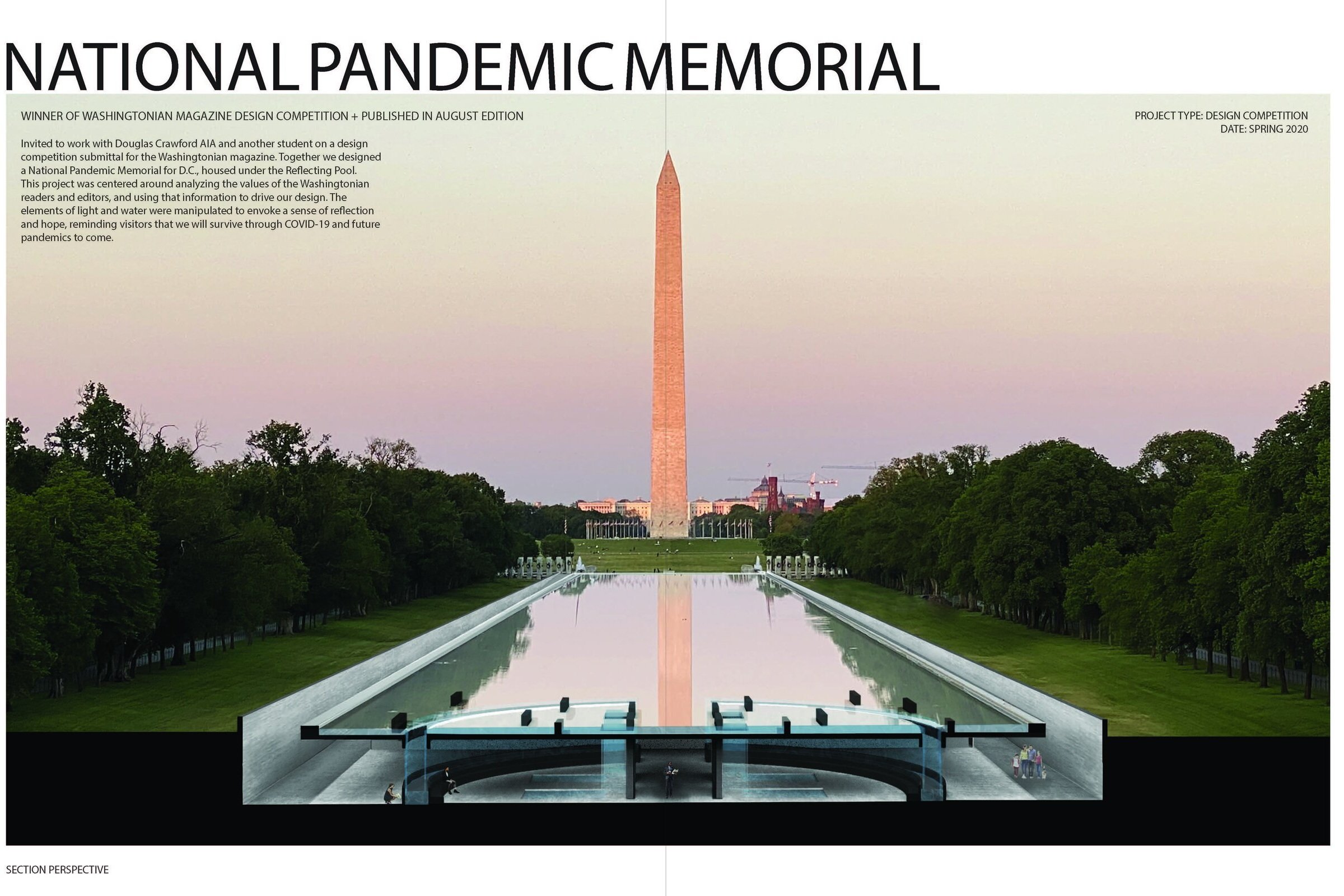
''We celebrate your unique lived experiences and creative voices. Thank you for trusting us to support your journeys.''
- WRNS Studio Foundation
2021 Inaugural Recipients
WRNS Studio Foundation inaugural awardee and graduate Daquan Proctor, Master of Architecture and Master of Landscape Architecture ‘24
-
Getting to know Daquan Proctor
An inaugural recipient of the WRNS Studio Foundation Scholarship, Daquan Proctor shares his lived experience, interests in architecture and landscape design, and recent work.
What is your educational plan? What design or research interests do you plan to pursue during your studies?
I am continuing my momentum towards licensure as both an architect and landscape architect by pursing a concurrent M.Arch and MLA at the University of Washington in Seattle. I am taking coursework in both disciplines and engaging with relevant research through the Green Futures Lab.
Pursuing a master's degree in both architecture and landscape architecture, I am interested in studying the intersectionality between disciplines and how the decisions we make about the built environment impact the natural environment and the people who live there. These interests are explored through focused coursework, my role managing the Green Futures Lab, and ultimately will be presented in the form of a thesis project culminating my three years of academic work. The thesis tentatively plans to document the extent of environmental quality disparities existent in predominately minority communities in Seattle, primarily concentrated in South Seattle. The University of Washington's Institute for Health Metrics and Evaluation reported a lifespan difference up to 13 years shorter compared to wealthier and whiter neighborhoods, due to higher long term pollution exposure. After documentation, I plan to generate a ranked list prioritizing the polluting factors with the greatest impact on health and environmental quality and recommended remediation strategies. The second phase of the project would seek to synthesize the list of remediation requirements into proposals for healthy well-designed community and natural spaces. Phase two would transform underutilized sites that once polluted their communities into spaces that are not only acceptable, but desirable. Livable and healthy should be a baseline for every neighborhood, residents deserve access to high quality public space and natural environments regardless of race or income. I plan to take the McKinley Futures Nehemiah Studio that is actively supporting the anti-displacement efforts of Black home and church owners in Central District, the last remaining Black neighborhood within the city limits. I envision this studio being influential in informing how to navigate improving the built environment quality in minority neighborhoods without increasing risks of displacement. Black neighborhoods have historically been the target of discriminatory zoning and land use policies, often with little to no representation to advocate for their interests and rights. My academic studies and proposed thesis are part of a larger commitment to my community to leverage my voice in the design room to advocate for those least considered and most impacted.
How will your cultural background and lived experience help you — as a future architect or designer — create a more beautiful, sustainable, equitable built environment?
With a reported 2% of licensed architects identifying as Black or African American, I was disappointed but not surprised to see that I was the only student in my Masters of Architecture cohort with Black lineage. The lack of diversity definitely impacts my relationship with the industry, and is even more visibly an issue in the Pacific Northwest region which has a proportionally small Black population in general. With such scarce representation in the design room, it is safe to assume that the resulting architecture is not necessarily representative of the interests and needs of the diverse array of people it serves. This inspires me to make topics of equality and access core tenants of my design ideology and to do my part in inspiring the following generations to make our industry more equitable. As a future architect, I plan to support upcoming minority architects and students through involvement with programs like NOMAS, internships, and potentially teaching. I truly appreciate everyone who has gotten me where I am today, and hope to be that person for others in the near future.
WRNS Studio Foundation inaugural awardee and graduate Jeffrey Walker, Bachelor of Architecture ‘24
-
Getting to know Jeff Walker
An inaugural recipient of the WRNS Studio Foundation Scholarship, Jeff Walker shares his perspective on how architecture can be used as a form of activism, his interest in learning about African architectural typologies, and his recent work.
What is your educational plan? What design or research interests do you plan to pursue during your studies?
I plan on finishing my bachelor's degree in 2024 and acquire the required accreditation and experience to work in the architecture field afterward. While in school I hope to learn a lot more about African architectural typologies since Africa is often painted as having no history or great feats in architecture, that its architecture is nothing but huts, and inferior to "Western" architecture. Also, as a black man in America who has no idea about the nationalities or ethnicities of his ancestors, I feel like studying African architecture would be a good way to have a cultural connection to my ancestors. I think this would contribute to the advancement of architecture in that learning about African methods would allow me to have any designs I make be faithfully inspired by them. This would make the façade of wherever I work more diverse and also raise awareness from the public about the beauty of Africa's long history. In terms of design interest, I think I would be interested in activism through architecture, especially for people with lower income and people of color. I feel like, in America, these people are the ones who have it the worst, and need the most assistance. A lot of people in America who have lower incomes are people of color, and helping those in need who look like me is definitely something I would go to great lengths to accomplish.
How will your cultural background and lived experience help you — as a future architect or designer — to create a more beautiful, sustainable, equitable built environment?
I grew up in a mostly white town in rural Wayne County, in upstate New York. In this town, a lot of people mostly saw being a leader, successful, and hard-working as traits exclusive to white people. Due to this, I made every effort I could to lead, be successful, and work hard so as to prove to others that people of color could do anything that a white person can. When I got interested in architecture, I started to think about how architecture can be used as a form of activism and as a way to give people of all backgrounds the opportunity to excel in the same way I have. One way I have thought about doing this is by designing affordable homes for people, families, and communities with lower incomes.
Selected Works
National Pandemic Memorial by Daquan Proctor
-
Professor Douglas Crawford invited another student and myself to work on a competition submission for the Washingtonian Magazine design competition. The competition prompted us to reimagine an iconic Washington, D.C. public space for the post COVID-19 era. For context we performed demographic research on the Washingtonian Magazine readers and editors to identify common values, using our findings to inform our proposal. Together we designed the National Pandemic Memorial, housed under the existent Reflecting Pool. Our subterranean memorial employed water and light both aesthetically and functionally, highlighting and encouraging guests to interact with the handwashing waterfall stations. The goal was to use design elements to seamlessly integrate sanitization checkpoints and make them an engaging part of the architectural experience. Due to the small team size I was involved in all phases of the project design, with a heavy focus on creating the final presentation graphics. Our submission won the competition and was published in the August 2020 edition of the Washingtonian Magazine and Maryland Today.
-
Currently I am the Lab Manager at the Green Futures Lab at the University of Washington. My duties involve providing high level administrative and project specific research and support for the lab. I primarily provide support on our two main active projects: the Biodiversity Green Wall and the Sweetgrass Shoreline Restoration. In addition to my administrative duties I supervise green wall and irrigation system operation, coordinate maintenance, and conduct weekly plant assessments to track overall wall health. The Sweetgrass Shoreline Restoration project is more research focused and is heavily centered around prototyping and testing floating wetland modules that aim to restore lost salmon habitat along our urban shorelines. I worked with the Downtown Seattle Association and Metropolitan Improvement District for 9 months to support efforts to revitalize several neglected public parks and squares in Downtown Seattle. As Assistant Supervisor of Public Space I provided consistent staffing to support the activation and right-of-way improvements of Westlake Park, Occidental Square, and other downtown public space locations. I supervised the daily operations in the activation areas, ensuring that Park Ambassadors were maintaining clean, welcoming, and fully activated public spaces for all to enjoy. Included in these responsibilities were assisting with coordination, training, and data tracking. I was responsible for supporting and developing efforts to activate these public spaces. Part of my duties include conducting hourly park counts and compiling collected park data into reports to inform my supervisors of park activity and trends. Additionally, our parks have increasingly become centers of support for the growing population of people experiencing homelessness. Therefore, I have learned a lot about the initiatives Seattle has in place to support these vulnerable populations and I work with these individuals directly within the park setting.
-
I worked on a grant-funded project with Professor Ming Hu at the University of Maryland advising the School of Public Health on a design for a mobile COVID-19 clinic. The clinic had to be 350 ss ft, collapsible to be carried by 1-2 people, and made of a cheap material such as cardboard or paper. The clinic would serve as a template to be replicated in underserved communities that don’t have the resources for traditional testing centers. The material restriction of cardboard or paper was essential to making our design accessible and replicable in low-income communities, and informed our selection of an origami based structure. Our design used the principles of origami to leverage the structural properties already existent in the material to create a self-supporting structure that can be collapsed into a flat-folded form. We used wind flow analysis software to evaluate the aerodynamics of structure and identify potential dead zones where viral particles can linger. I was heavily involved in the design and testing phases of the project, and was tasked with creating an animated simulation of the structure’s folding process using Rhino and Grasshopper.
Artpark by Jeff Walker
-
My semester project was Artpark, which is in Lewiston, New York. The prompt for the project was to design a "rest stop for all," where we got to create our own meanings of "rest" and "all." For my project, I chose to define "rest" as "an upliftment from oppression by educating the wider public about the history of the group being oppressed, and through supplying resources that the group lacks due to such oppression. I defined "all" as people of all races, colors, and ethnicities. My project was inspired by the water crisis affecting the Tuscarora Native American Reservation to the east of Lewiston, which has no access to clean water due to purposeful drawing of the reservation's borders and the location of the nearby Niagara Water Reservoir. I used the forms of most of the buildings to create a slope in the roof that would funnel water towards collection basins, which would allow for the collected water to be filtered by the Tuscarora people. This is done in each of the buildings, except for the education and engagement building. To accomplish the education part of the project, I intended that the education and engagement building be used as a sort of classroom building, teaching about Tuscarora culture, their history, and the various crimes committed against them. I also made sure that several of the buildings had various views of the performance stage, near the middle of the site plan. I did this because I intended the stage to be used for the Tuscarora people to do traditional performances, such as their Smoke Dance. I hoped the purposeful placement of the buildings and the views they supply would make it difficult to avoid learning about the Tuscarora people since the whole point of the project is to decrease the public's ignorance about indigenous people and to raise awareness for them.
-
Throughout my high school career, I was active in several groups, clubs, and associations. I was a member of my high school soccer, basketball, and indoor and outdoor track teams, as well as being in my school's Student Council and National Honor Society, being elected to the position of President and Vice-President (respectively) in my senior year. My involvement in these groups had a large impact on my capability to work in a team, organize groups and events, and generally work hard. I was also a member of the Boy Scouts of America, where I achieved the rank of Eagle Scout in 2019, and had been elected by the members of my Troop to the position of Historian, Patrol Leader, Assistant Senior Patrol Leader, Senior Patrol Leader, and Junior Assistant Scout Master. These positions gave me various experiences in group and event organization, public speaking, and various forms of leadership. Over the course of my Scouting career, I learned about how to use leadership to teach and guide younger scouts, and also about the responsibilities of a leader, and how holding a position of power is a duty, and not a privilege.
-
"Friends and Foes" is a poem about various feelings that I and people I know have felt. I used personification to give each emotion human qualities, which I thought would make it easier to relate to and understand the poem. The poem was influenced by a song by English rapper Dave, called "Voices." Dave makes a lot of socially conscious music and has extreme poetic skills, and I tried to replicate this style in my own poem. I have always been interested in social work and volunteering, and rap is my favorite genre of music, so creating a poem with a strong social message was something I enjoyed quite a lot.
Friends and Foes
I’ve never met Depression
But I hear she’s friends with Heartbreak
And I can tell you all about Woe
She stalks my friends everywhere they go
But they’re all someone I’ll never knowBut occasionally I meet with Rage
Because Justice keeps killing my brothers
Rest in peace George
And rest in peace Ahmaud
It’s so crazy how this shit’s allowedAnd Addiction took two of my cousins
I hope they both know
That I loved them
And if Weakness ever shakes my hand
I’ll leave that dude in the sandConfidence has been my friend
And Doubt is always
In the mind of the people I contend
And I ain’t friends with Grief
Me and that dude still have beefBut I’m also good friends with Boredom
We talk a lot when I’m not moving forward
And Hard Work’s my colleague
I knew him since before college
In fact, he helped me meet with KnowledgeAnd I’ve heard of Regret
But I left him out in Wayne
I often confide in Impulse
So people think I’m insane
But all of that keeps Stress out of my brainI fell in love with Pleasure
She brings me memories
That I will always treasure
I hope Success meets my friends
And we never hear from PressureBut I still got love for the Hustle
He brings me money and muscles
And he’s associated with Pain
But I know it’s worth it in the end
So I guess you could say we’re friendsAnd I don’t do calls with Envy
Or respond to texts he sends me
And next year I’ll be twenty
But Youth and I will still be friendly
I’ll be sipping on juice, too young for HennyAnd I don’t have time for Suffering
Because my agenda’s way too full
So during dark times, I feel nothing
And pretend to keep my cool
It's foolish, and I know that I’m a foolAnd I’ve never been cool with Sorrow
I told him to
Call me back tomorrow
Over and over
Every day I give him the cold shoulderAnd Optimism’s been my bro
All the way since day one
Even when people hated
And when they all made fun
We’ll see who’s laughing when the day comesAnd I’m so grateful
For Freedom
And that Change came
When he was needed
Every day I give them heartfelt greetings







